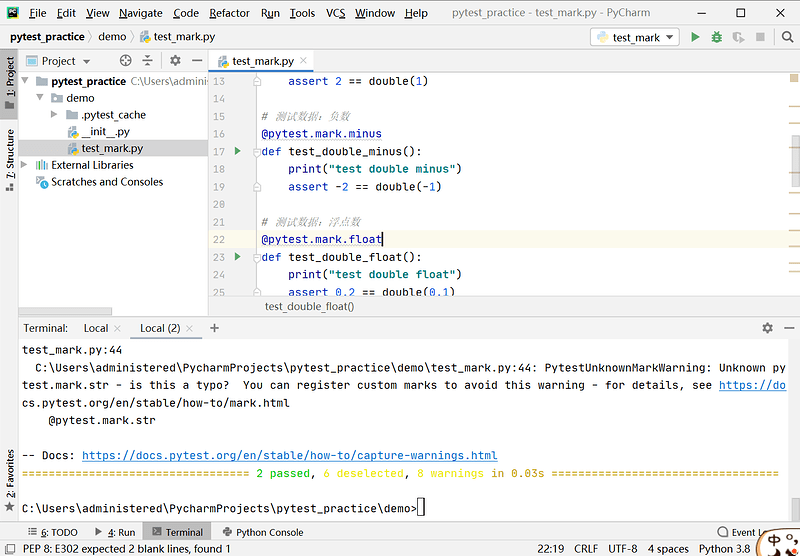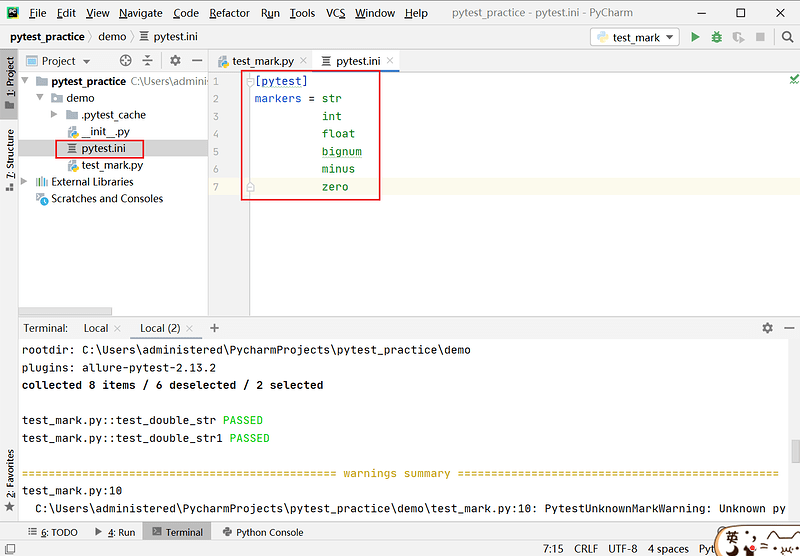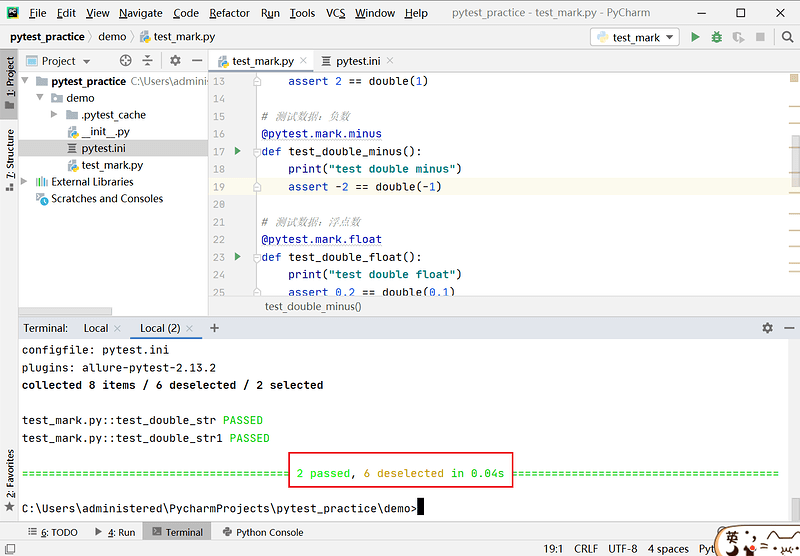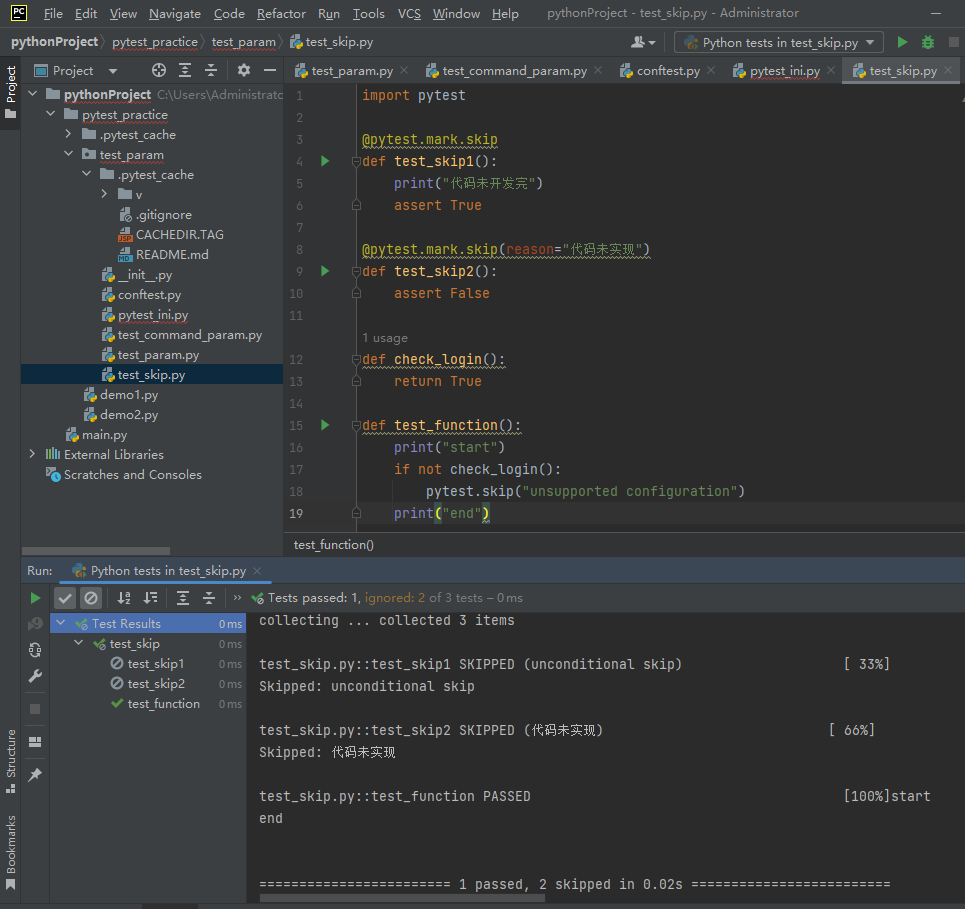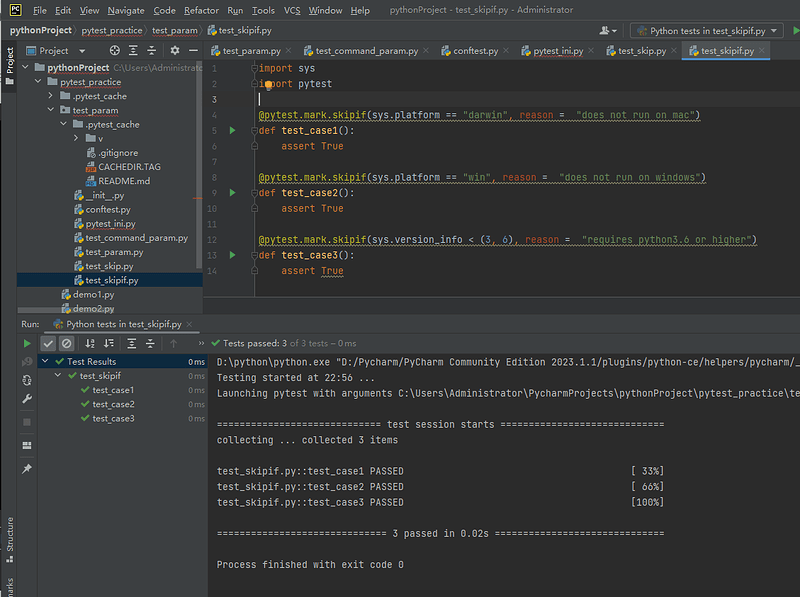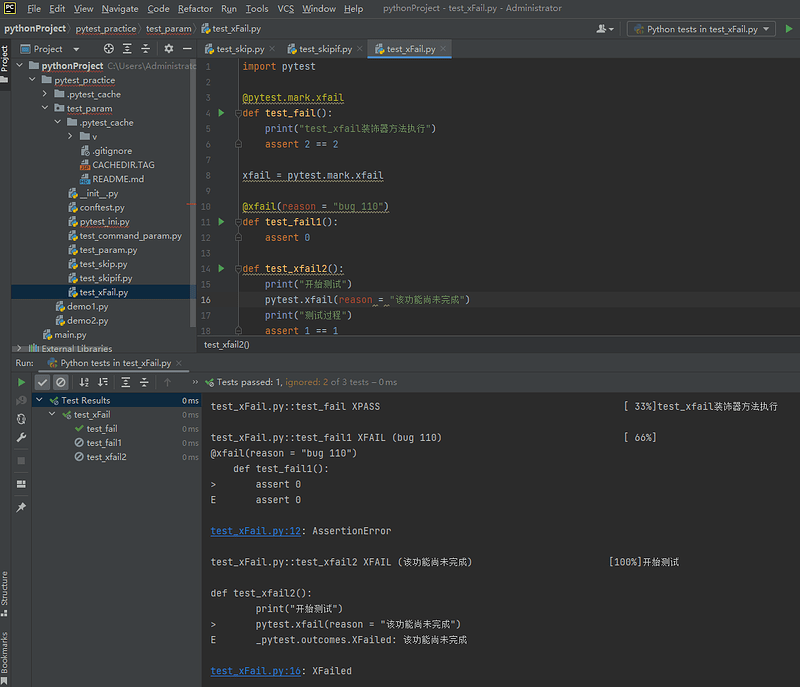一、Mark标记测试用例
-
场景:只执行符合要求的某一部分用例,可以把一个web项目划分为多个模块,然后指定模块名称执行。
-
解决:在测试用例方法上加@pytest.mark.标签名
-
执行:-m执行自定义标记的相关用例
pytest -s test_command_param.py -m=webtestpytest -s test_command_param.py -m apptestpytest -s test_command_param.py -m "not ios"
源码:
import pytest
def double(a):
return a * 2
# 测试数据:整型
@pytest.mark.int
def test_double_int():
print("test double int")
assert 2 == double(1)
# 测试数据:负数
@pytest.mark.minus
def test_double_minus():
print("test double minus")
assert -2 == double(-1)
# 测试数据:浮点数
@pytest.mark.float
def test_double_float():
print("test double float")
assert 0.2 == double(0.1)
@pytest.mark.float
def test_double2_minus():
print("test double float")
assert -10.2 == double(0.2)
@pytest.mark.zero
def test_double_0():
assert 10 == double(0)
@pytest.mark.bignum
def test_double_bignum():
assert 200 == double(100)
@pytest.mark.str
def test_double_str():
assert 'aa' == double('a')
@pytest.mark.str
def test_double_str1():
assert 'a$a$' == double('a$')
实例:
输入命令行pytest test_mark.py -vs -m "str"
- 注意:这里出现了8个warnings。
- 解决方案:在同级目录下,新增
pytest.ini文件,输入以下内容:
[pytest]
markers = str
int
float
bignum
minus
zero
重新运行命令行pytest test_mark.py -vs -m "str",就不会再出现warnings了:
跳过(Skip)及预期失败(xFail)
这是pytest的内置标签,可以处理一些特殊的测试用例,不能成功的测试用例等。
skip:始终跳过该测试用例。采用添加装饰器@pytest.mark.skip,或者添加跳过代码pytest.skip(reason)等两种方式。
skipif:遇到特定情况,跳过该测试用例。采用添加装饰器@pytest.mark.skipif的方式。
xFail:遇到特定情况,产生一个“期望失败”的输出。采用添加装饰器@pytest.mark.xfail,或者添加跳过代码pytest.xfail(reason)等两种方式。
